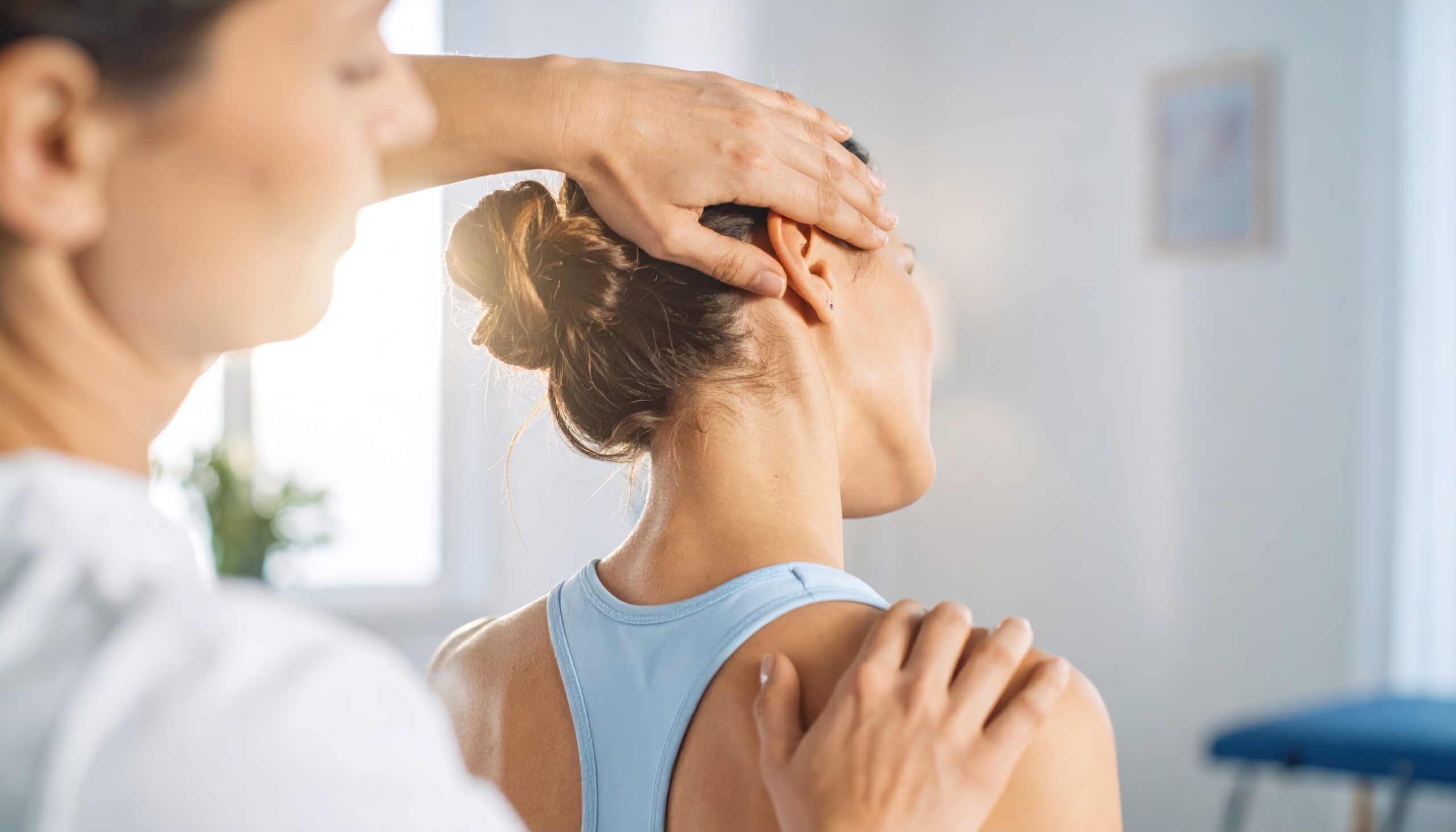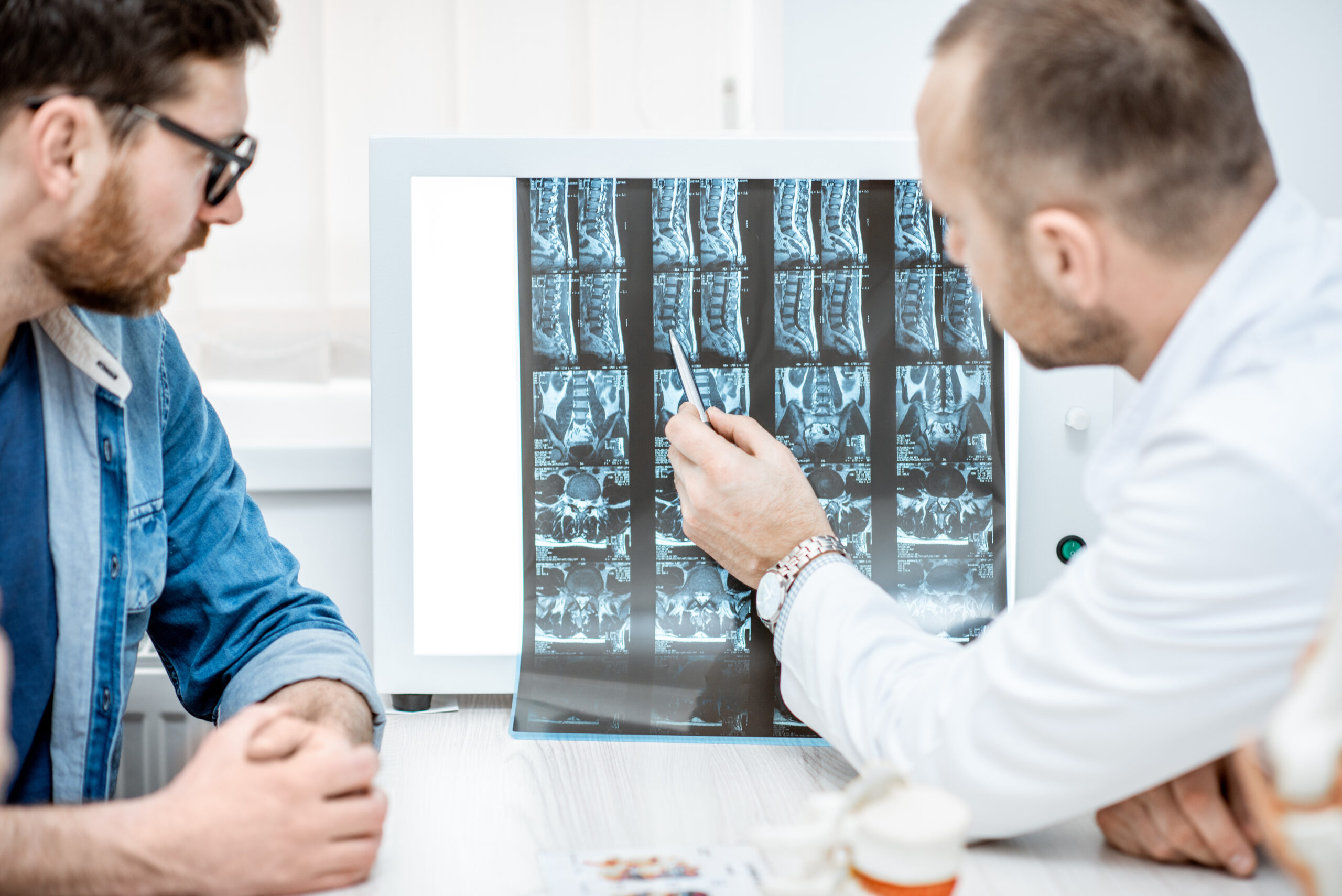
Spinal stenosis occurs when the spinal column narrows, leaving less room for the nerves to function naturally. Stenosis can put pressure on the nerves, causing back pain and impacting your normal bodily function in the arms and legs.
If you experience symptoms of spinal stenosis, you will want to seek treatment from an experienced spinal neurosurgeon. Dr. Todd H. Lanman is a board-certified and award-winning spinal specialist. He regularly works with patients who have spinal stenosis to develop treatment plans and alleviate their discomfort.
When it comes to spinal stenosis, early diagnosis and management are essential. The sooner you get help, the more likely you can prevent your pain from worsening. Here’s what you need to know about this condition.
What is Spinal Stenosis?
A healthy spinal cord leaves enough room for nerves to transmit information safely to and from the brain. Your nerves share commands from the brain to move your body while sending back information about the world around you – like the sensation of pain from a stubbed toe. With spinal stenosis, pressure in the spinal column limits the space of the nerves, causing pain as they are pushed together.
Spinal stenosis most commonly occurs in the lower back (lumbar spine) and neck (cervical spine). However, it can occur anywhere in the spinal column depending on the cause of the issue.
Symptoms of Spinal Stenosis
Spinal stenosis can present with a variety of symptoms depending on where the condition occurs. This is because the spinal nerves transit information that impacts different parts of the body. Stenosis in your cervical spine is more likely to impact your arms while stenosis in the lumbar region will impact your legs. Here are some warning signs to be aware of.
In the Lower Back (Lumbar Stenosis)
Patients may experience back pain at the site of the spinal stenosis. They may also experience pain or cramping in the legs, especially when standing or walking. This can make patients believe the issue is leg-related, even though the problem lies in the spine. Some people may experience relief when sitting or bending forward.
In the Neck (Cervical Stenosis)
Patients may experience numbness, tingling, or weakness in the limbs. They may have a harder time walking and experience balance issues. Nerve issues can also affect bowel and bladder function, which means a patient may experience incontinence as a result of their spinal stenosis.
Progression of Symptoms
It’s rare for spinal stenosis symptoms to develop at the same time. Patients may notice a few minor symptoms while ignoring others. These symptoms can get worse as the nerve canal is further compressed. Ignoring symptoms in the short run can lead to significant pain, numbness, and incontinence as this condition progresses.
Causes of Spinal Stenosis
There are multiple causes of spinal stenosis, some of which relate directly to injuries while others relate to lifestyle factors and genetics. Here are a few common causes of spinal stenosis.
Age-Related Degeneration
Aging and arthritis contribute to the thickening of ligaments and bone spurs. These unwanted growths can push into the spinal column and cause pain. Many people develop spinal stenosis because of natural wear and tear on the body. As you use your body throughout the years, parts can wear out naturally and cause pain. This is why you may experience mild symptoms at first and find they progress over time.
Herniated Discs
A herniated disc occurs when part of the nucleus (the squishy center of the spinal disc) breaks out and pushes into the nerve canal. This causes spinal stenosis because the space where the nerves reside is encroached on. Herniated discs often occur after an injury, like a car accident or a bad fall during a sporting event.
Congenital Factors
Some people are born with a naturally narrow spinal canal, which makes them more likely to develop spinal stenosis as they age.
Other Causes
Spinal stenosis has a variety of causes which can all leave patients in a place of discomfort. A few additional causes of this disease include tumors, spinal injuries, and Paget’s disease. A spinal injury could occur because of a bad fall or workplace accident, while Paget’s disease causes excessive breakdown and regrowth of bones.
What Are the Treatment Options for Stenosis of the Spine?
There is good news for patients who are diagnosed with spinal stenosis: there are plenty of treatments available. If you work with Dr. Lanman, he will develop a personalized, multi-step plan that incorporates a variety of treatments. These will include conservative treatments to reduce your discomfort and additional options to consider in the long run.
Conservative Treatments
Conservative treatments, also called non-invasive treatments, are designed to reduce your discomfort while strengthening the muscles in your back. They are also meant to slow the growth of spinal stenosis so your symptoms do not worsen. A few non-invasive treatments Dr. Lanman may recommend include:
- Physical therapy: Dr. Lanman will walk you through a series of daily stretches that are meant to support spinal health. He may also recommend regularly meeting with a physical therapist.
- Heat/ice therapy: Heat therapy can help your muscles relax while ice therapy can reduce inflammation. Dr. Lanman may recommend one or both for your spinal stenosis.
- Anti-inflammatory medications: This is another way to directly reduce inflammation, which can make your spine sensitive to the touch.
- Lifestyle modifications: Dr. Lanman may recommend changes to how you work, sleep, or drive. He may also recommend changes in diet, alcohol consumption, and smoking habits.
- Acupuncture: This is another way to reduce your spinal stenosis symptoms so you can live more comfortably.
Each of these treatments supports spinal health but works even better when paired with others. For example, hot and cold therapy can reduce discomfort, while changing lifestyle factors can reduce pressure on your spine. Every treatment recommendation works as part of the big-picture plan.
Epidural Spinal Injections
Dr. Lanman may recommend epidural injections to treat your spinal stenosis. These injections can reduce inflammation and discomfort, allowing you to navigate your daily life. Epidural spinal injections can reduce discomfort for a few weeks up to a few months depending on the patient. They can also be administered in the doctor’s office, not in a hospital. Ask Dr. Lanman if you are a good fit for this treatment option.
Surgical Interventions
If the conservative treatments for your spinal stenosis are not effective, Dr. Lanman, or your spinal neurosurgeon of choice, may recommend surgical intervention. Most doctors try non-surgical options first because they are less invasive and less stressful for patients. However, if your symptoms are progressing, surgery may be the best long-term solution for this condition. A few operations Dr. Lanman may consider include:
- Laminectomy: This removes bone parts that are pushing into the nerve canal.
- Partial discectomy: This removes the part of the spinal disc that has herniated and is affecting your nerves.
- Artificial disc replacement: This is when Dr. Lanman removes the damaged spinal disc and replaces it with an artificial model.
The recommended surgical intervention often depends on the cause of the spinal stenosis. For example, if your stenosis is caused by a herniated disc, Dr. Lanman will consider a discectomy or disc replacement procedure. If the issue is related to bone spurs or vertebrae, a laminectomy might be more appropriate.
Living with Spinal Stenosis
There is a chance that your spinal stenosis is not cured, and you instead learn to reduce your pain levels and live with this condition. Even if Dr. Lanman can cure your spinal stenosis, he may recommend a set of best practices to protect your spinal health in the years to come. Here are a few things you can expect when living with spinal stenosis.
Activity Modifications
A spinal stenosis diagnosis does not mean you have to give up exercise. In fact, many low-impact exercises can support your back while promoting other aspects of your year. Dr. Lanman may recommend switching to low-impact sports like swimming and cycling to manage your stenosis.
He may also recommend posture adjustments in your workplace or car. Good posture can take pressure off your spine and prevent further compressions of the nerve canal.
Long-Term Management
In the long run, Dr. Lanman will want to continue meeting with you to confirm your spinal stenosis is not worsening – or returning if you seek treatment for it. He will recommend scheduling regular check-ups and instruct you on monitoring your symptoms. For example, symptom journaling is a great way to monitor whether your spinal stenosis is getting worse.
Keeping up with your physical therapy and mobility exercises is a great way to protect your spinal health and reduce the potential for back pain. You can invest in your future while treating your spinal stenosis now.
Taking Control of Spinal Stenosis
Spinal stenosis is an uncomfortable procedure that can get worse over time. Not only can you experience back pain throughout the day, but you may have difficulty walking, feel numbness in your arms or legs, and potentially develop incontinence. It is better to seek treatment early on before your symptoms get worse. Early intervention may result in conservative treatments like physical therapy and anti-inflammation medication successfully helping the patient heal, while more advanced spinal stenosis could require surgical treatments.
You don’t have to live with back pain. Request a consultation with Dr. Lanman and receive a personalized assessment and treatment plan. He is happy to help you live a comfortable life again, even if you currently experience high levels of discomfort.
Ready to reclaim your life? Get in touch with Dr. Lanman Today.
FOLLOW US ON SOCIAL MEDIA | @ADRSPINE




